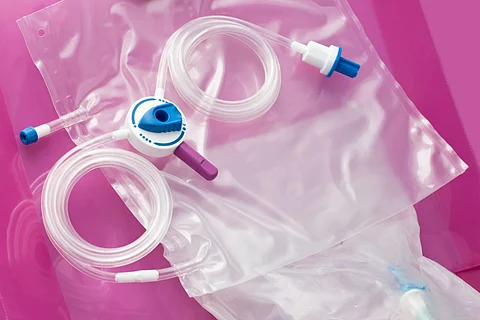FRIDAY, Dec. 20, 2024 (HealthDay News) -- Similar postinsertion complication and technical survival rates are seen with single- and double-purse-string suture catheter insertion methods for peritoneal dialysis, according to a study published online Dec. 11 in Renal Failure.
Xiaoling Li, Ph.D., from the Sichuan Academy of Medical Sciences and Sichuan Provincial People's Hospital in Chengdu, China, and colleagues conducted a retrospective study involving 142 patients who underwent peritoneal catheterization using the single- or double-purse-string suture method (Groups S and D, respectively).
The researchers found that within the first month postinsertion, there were no significant intergroup differences in terms of infection complication rates or noninfection complication rates. At one, two, and three years, the estimates of technical survival were 96.3, 90.4, and 85.9 percent and 89.9, 86.7, and 84.8 percent in Groups S and D, respectively. During the three-year follow-up, patient survival rates were comparable between the groups.
"In conclusion, this study revealed similarities in postinsertion complications and catheter technical survival rates between the single- and double-purse-string suture methods for peritoneal dialysis catheter implantation," the authors write. "These findings highlight the viability of the single-purse-string suture method, which simplifies the surgical process and is worthy of widespread clinical use."
Abstract/Full Text


